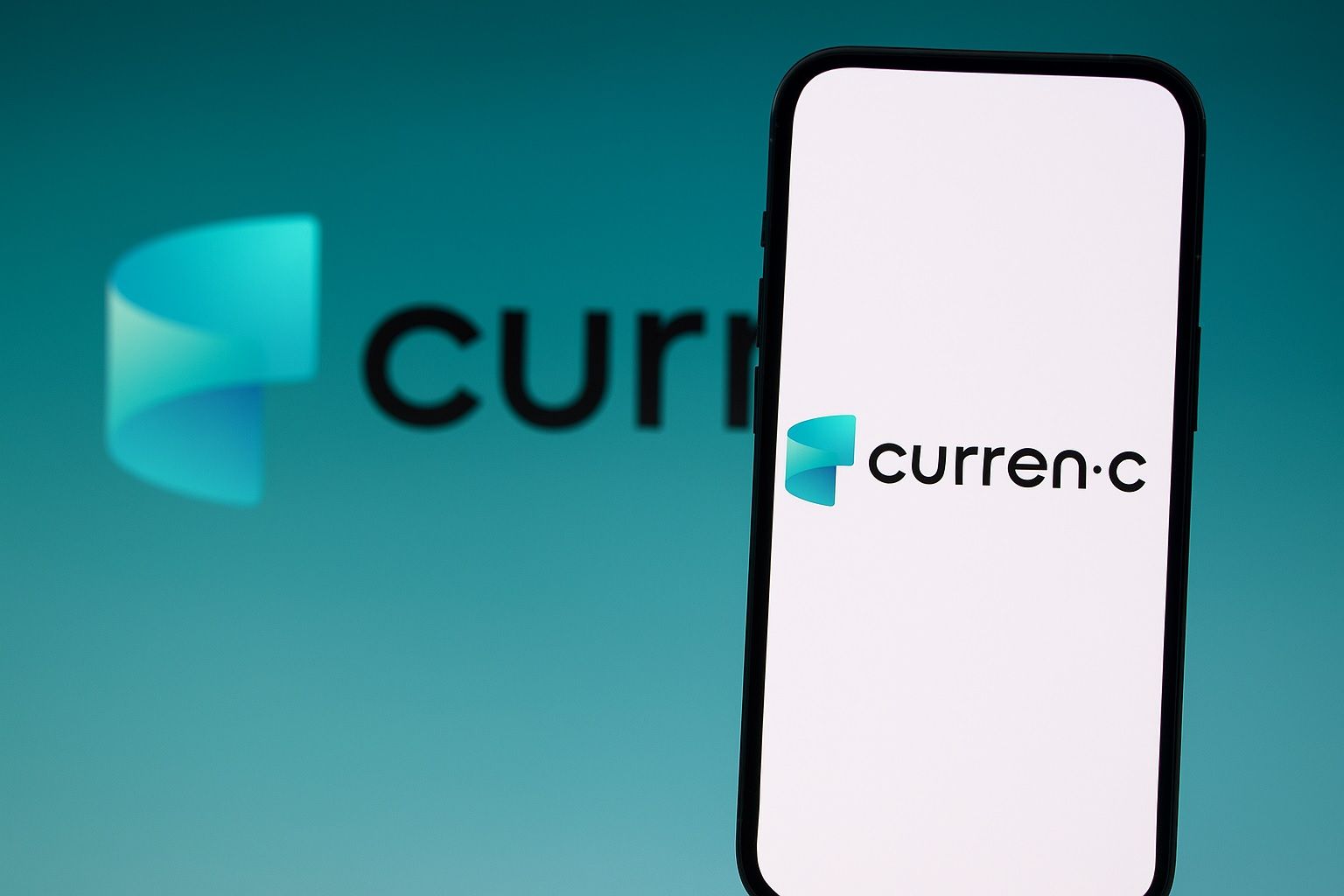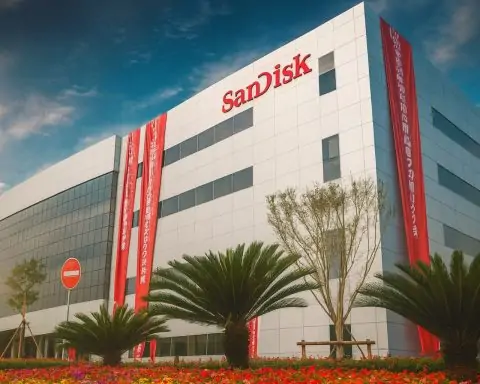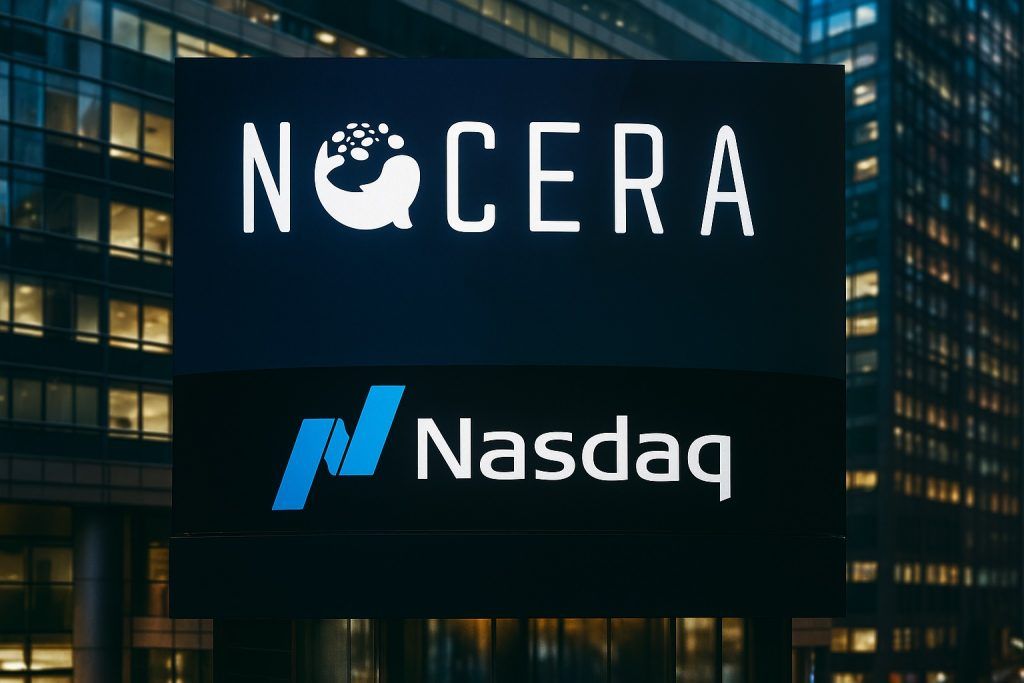- Surging Stock Price: CURE Pharmaceutical’s stock (OTCQB: CURR, now trading as AVRW) is around the mid-$3 range on November 3, 2025, after a massive rally. It closed last week at $3.78 – up 30.8% in a single day on Oct 31 [1] – and has climbed over 100% in the past two weeks.
- Recent News & Catalysts: The company has eliminated a major convertible debt overhang, reaching a global settlement with its lender to convert debt to equity and issue a new note [2] [3]. This move, along with upcoming earnings on Nov 18, 2025, has renewed investor optimism.
- Company’s New Identity: Formerly known as CURE Pharmaceutical, the company rebranded in 2023 to Avenir Wellness Solutions to reflect its shift toward wellness and beauty tech [4]. It develops proprietary drug delivery systems (like its CUREfilm<sup>®</sup> thin-film technology) and markets wellness products via its Sera Labs subsidiary (with celebrity partners like Nicole Kidman).
- Market Trends: CURE/Avenir is riding the wellness wave in a booming sector. The global health & wellness market hit ~$6.9 trillion in 2025 and is projected to reach $11 trillion by 2034 [5]. Rising demand for nutraceuticals, CBD products, and innovative drug delivery (including psychedelics research) provides a favorable backdrop for the company’s growth plans.
- Analyst & Technical Take: No major Wall Street firm formally covers this micro-cap, but technical indicators flash caution. The stock’s momentum is strong yet “very high risk” – it’s overbought on RSI and extremely volatile [6]. Short-term forecasts still lean bullish (one model sees ~13% upside in 3 months with a ~$2–$4 trading range) [7], but traders are warned a pullback or correction is likely after the parabolic jump [8].
High-Flying Share Price and Recent Performance 🚀
As of November 3, 2025, CURE Pharmaceutical’s stock is trading around $3.6 per share, reflecting an explosive rise in late October. On Friday, Oct 31, the stock closed at $3.78, up from $2.89 the day prior [9]. That single-day gain of +30.8% crowned CURR (now AVRW) as one of the market’s top percentage gainers. In fact, the stock has rallied five days in a row, more than doubling (+104% in two weeks) amid surging volume [10]. This momentum continued into Nov 3, with an opening trade around $3.52 and only a modest pullback from last week’s peak. By comparison, the share price was mere pennies over the summer, reflecting a 1-for-### reverse split that helped propel the nominal price into dollars. Investors who held through the restructuring have seen a dramatic rebound in value in recent weeks.
Such volatility cuts both ways. Intraday swings have been extreme – on Oct 31 the stock fluctuated nearly 27% from low to high [11]. Technical analysts note that CURR/AVRW is “very high risk” in the near term due to this volatility [12]. Notably, its 14-day RSI spiked above 85, an overbought level that often precedes a cooldown [13]. In short, the stock’s price action has been breathtaking, but traders should brace for turbulence. Even the bullish algorithms are cautious: one forecast expects an average trading range of roughly $3.64 to $3.92 in the next session [14] and anticipates the stock “may go both ways” given elevated volatility [15]. For current shareholders, the key question is whether this rally is justified by fundamentals – or running ahead of itself.
Latest News: Debt Overhang Cleared and Earnings Ahead
The recent liftoff in CURR’s stock coincides with major corporate news that resolved a long-standing overhang. On December 16, 2024, the company (by then renamed Avenir Wellness Solutions) announced a global settlement with Ionic Ventures, its convertible noteholder [16]. Under this deal, $8.7 million of debt was converted to equity at a steep discount, issuing ~8.3 million shares (subject to leak-out provisions) for only ~$233,000 in value [17]. The remaining debt was extinguished and replaced by a new 2-year note of $2.85 million [18]. In essence, Avenir wiped out the dilutive convertible financing that had been suppressing its share price. The company expects to record a one-time $5 million accounting gain in Q4 2024 from this extinguishment [19]. Just as importantly, it withdrew its lawsuit against the lender and ended the dispute on amicable terms [20].
CURE/Avenir’s CEO Nancy Duitch hailed this settlement as transformational: “Our shareholders were clear that top priority should be elimination of the convertible debt… we believe [these terms] are extremely beneficial to the company and our shareholders” [21] [22]. She noted that despite building a high-margin wellness business, the stock’s market cap had been “severely depressed” – recently totaling less than half of last year’s sales [23]. According to Duitch, the convertible debt overhang was the primary culprit for this valuation disconnect [24]. Now, with the debt deal done and even a bridge financing in the works to shore up the balance sheet [25], management claims the company “has never been in a better position to capitalize” on its product pipeline [26]. Indeed, they project 2025 to be a growth year, citing new products and 17 patents under their control fueling optimism [27].
Beyond the debt resolution, investors are looking forward to upcoming catalysts. The company’s next earnings report (for Q3 2025) is due on November 18, 2025 [28]. Any updates on revenue traction or guidance could sway the stock. Additionally, Avenir’s product launches and partnerships bear watching. In late 2023, the company struck a deal to feature its Seratopical Revolution skincare in FabFitFun subscription boxes, boosting exposure [29] [30]. It also launched new wellness strips and creams under the Sera Labs brand. Given the stock’s speculative surge, any news – good or bad – could trigger outsized moves. Traders will be scrutinizing the Nov 18 earnings for signs that sales are accelerating as management promised once marketing funds (from a prior asset sale) come through [31]. In the absence of new developments, the recent rally’s sustainability may hinge on broader market sentiment toward high-growth, small-cap wellness plays.
Company Overview: From Pharma to Wellness Tech
CURE Pharmaceutical Holding Corp. was founded in 2011 (headquartered in California) with a mission to improve how medicines are delivered and experienced [32] [33]. Historically a drug delivery technology innovator, CURE developed a proprietary platform called CUREform™, featuring oral thin films (OTF) and other novel dosage forms. Its flagship CUREfilm® technology produces dissolvable strips that can deliver active ingredients more efficiently than pills – improving bioavailability and patient adherence [34] [35]. Over the years, the company advanced a pipeline of film-based therapeutics, including CUREfilm Blue, an ED treatment strip with sildenafil (the Viagra ingredient), and CUREfilm Canna, a cannabinoid-infused oral film [36]. It even obtained a DEA Schedule I license to research psychedelic compounds (like LSD and psilocybin) delivered via its platform for mental health disorders [37] [38]. This pharma R&D foundation set CURE apart from typical supplement companies.
However, in recent years CURE pivoted towards consumer wellness and nutraceutical products, seeking more immediate revenue streams. In October 2020, the company acquired Sera Labs, Inc. – a health & beauty brand marketing platform – for $20 million [39]. Sera Labs brought a portfolio of CBD-based skincare, nutraceutical supplements (like Nutri-Strips vitamin dissolvable strips), and other wellness products. This acquisition was a turning point: CURE now operates two segments – “Cure” (pharma tech) and “Sera Labs” (consumer products) [40]. To reflect the broader focus, CURE Pharmaceutical rebranded to Avenir Wellness Solutions, Inc. in January 2023 [41]. (The legal name change is done, and the OTC ticker symbol changed from “CURR” to “AVRW” as of Aug 2023 [42].) Under the Avenir banner, the company pitches itself as a “broad platform technology and wellness company” developing patented delivery systems and incubating new innovations to monetize via partnerships [43].
Today, Avenir’s Sera Labs subsidiary is the revenue driver and public face of the business. Led by Sera’s founder (now Avenir’s CSO) Nancy Duitch, Sera Labs has launched over 25 products under brand lines such as Seratopical™, Seratopical Revolution™ (skincare) and Nutri-Strips™ (dissolvable supplements) [44]. These products emphasize science-backed, plant-based ingredients – aligning with consumer trends for natural wellness. Notably, Hollywood actress Nicole Kidman came on board in late 2020 as Sera Labs’ strategic partner and global brand ambassador [45], lending star power to the Seratopical line. The company leverages e-commerce and retail distribution: Sera’s goods are sold direct-to-consumer on its websites (with subscription options) and available via major retailers, drugstore chains, and on Amazon [46]. Meanwhile, the “Cure” pharma segment continues to seek partnerships to advance its drug candidates (for example, CUREfilm Blue for ED) and has even licensed technology to bigger players (it inked a licensing deal with Canopy Growth for cannabinoid delivery) [47]. This hybrid model – pharma innovation plus consumer product sales – is unusual, and executing on both fronts will be key to Avenir’s long-term success.
Financially, Avenir is still a small-cap with modest revenues. Full-year 2023 net sales were ~$4.2 million, slightly down from $4.9 million in 2022 [48]. In the most recent reported quarter (Q4 2023), revenue was $1.1 million (up ~12% year-on-year) [49]. While growth has been limited, the company has blamed timing issues – for instance, delays in receiving proceeds from a 2022 asset sale curtailed marketing spend, muting sales that could have been higher [50]. On the bright side, gross margins have been improving (Q4 2023 gross margin rose ~4 percentage points YoY) thanks to better cost control [51]. The wellness products generally carry high margins, especially via direct-to-consumer channels. Avenir has also trimmed operating expenses; its Q4 operating loss (excluding non-cash items) improved by $0.9M vs. the prior year [52]. Still, the company is not yet profitable and has relied on financings (like those convertibles) to fund development. With the debt cleaned up and a “bridge” funding in progress [53], management asserts it now has the runway to ramp up advertising and innovation. The goal for 2025 is to accelerate sales growth – by more aggressively marketing Seratopical and Nutri-Strips, launching new products, and possibly inking strategic partnerships to expand distribution or co-develop new wellness technologies.
Industry Context: Booming Wellness Market, Tough Competition
CURE/Avenir is operating at the intersection of two dynamic sectors: pharmaceutical drug delivery and consumer wellness & nutraceuticals. On the wellness side, the macro picture is highly encouraging. Globally, consumers are spending more on health, beauty, and well-being than ever before – the wellness economy reached a record $6.3 trillion in 2023 [54] and is projected to approach $7 trillion by 2025 [55]. An aging population, increased health-consciousness (exacerbated by the pandemic), and technological innovations (like personalized supplements) are driving robust growth estimated at ~5–7% CAGR over the next decade [56]. In Avenir’s wheelhouse, niches such as nutraceuticals, CBD products, and beauty tech are seeing particular momentum. For example, demand for clean-label and plant-based supplements is rising, and consumers increasingly seek convenient delivery formats (like the oral strips and topicals Avenir produces) instead of traditional pills [57] [58]. The company’s focus on “future of wellness” innovations – e.g. DNA-based skincare (its Seratopical Revolution line) and potentially psychedelic wellness therapies – aligns with some of the cutting-edge trends in the industry.
That said, Avenir faces stiff competition on all fronts. The wellness and beauty market is crowded with both giants and startups. In skincare and nutraceuticals, Avenir’s Sera Labs competes with established brands (think Estee Lauder, L’Oréal in beauty; Nature’s Bounty or Charlotte’s Web in supplements/CBD) as well as a plethora of indie D2C brands. Gaining shelf space and consumer mindshare requires continuous marketing investment and brand differentiation (hence the enlistment of Nicole Kidman to boost credibility). On the pharma-tech side, Avenir’s thin-film delivery platform goes up against other drug delivery specialists and big pharmaceutical companies’ in-house R&D. Notably, thin film therapeutics is a niche that some larger firms have explored; for instance, Merck and others have developed dissolvable films for certain drugs. Even in cannabinoid and psychedelic delivery, competition is heating up as more biotech players enter the fray. Avenir’s strategy has been to patent-protect its innovations (holding 15+ patents) and pursue partnerships rather than compete head-on with far larger R&D budgets [59]. The 2020 licensing deal with Canopy Growth gave Canopy rights to use CURE’s delivery tech for cannabis products [60], illustrating how Avenir can monetize its IP via larger platforms. Going forward, investors will want to see more such deals or co-developments to validate Avenir’s technology in the marketplace.
Another consideration is regulatory and market shifts. The company’s roots in pharma mean it must navigate FDA regulations for any actual drug candidates (like CUREfilm Blue for ED, which would need clinical trials and approval). Meanwhile, its CBD and nutraceutical products operate in a more lightly regulated space, but still face evolving rules (e.g. FDA scrutiny of CBD in cosmetics and supplements). Market trends can also be fickle – the CBD boom that lifted many stocks a few years ago cooled off, and only those with strong marketing and unique products have sustained. Avenir is betting on a diverse approach (wellness + beauty + tech) to capture multiple growth areas. The overall industry outlook is positive, but Avenir will need solid execution to carve out a meaningful share. The good news is that consumer spending on health and self-care remains resilient even in uncertain economic times, and Avenir’s multi-channel distribution (online, retail, and subscription) allows it to adapt to consumer buying preferences. If the wellness market continues its upward trajectory (expected to hit $9–11 trillion by early 2030s [61]) and Avenir can scale up its sales within even a small fraction of that market, the payoff could be substantial.
Technical Analysis: Momentum vs. Risk
From a technical standpoint, CURR/AVRW stock charts look like a classic rollercoaster. The recent surge broke the stock out of a long period of dormancy in penny-stock territory. All major moving averages turned upward in October, triggering bullish signals – the short-term average crossed above the long-term average, which analysts view as a positive trend indicator [62]. Trading volume exploded alongside price, confirming the momentum (on Oct 31, volume topped 1 million shares, roughly 7× higher than the prior day’s volume) [63]. These are signs of growing trader interest and possibly a short squeeze or speculative fervor given the stock’s low float. On technical charts, resistance levels have been obliterated, as the stock blew past its 52-week high. According to one analysis, with “no resistance above” and support around $2.89 (from prior volume accumulation), the “risk/reward [remains] attractive” if the uptrend holds [64].
However, the speed of the ascent raises red flags. At current levels, CURR is trading far above its historical base, and short-term oscillators reflect extreme conditions. The Relative Strength Index (RSI) shot above 85 last week [65] – well into overbought territory (typically, RSI>70 suggests a stock may be due for a pullback). Bollinger Bands have widened drastically, indicating high volatility. In fact, the stock’s average daily volatility was over 26% for the past week [66]. Such wild swings mean risk management is critical: a stop-loss strategy is advised by technical commentators, who noted a recommended stop around $3.66 to protect against a sudden reversal [67]. The “very high risk” label given by StockInvest’s model underscores that while the trend is up, downside could be severe if momentum snaps [68]. Traders who chased the rally at the peak need to be mindful that even a drop back to technical support (around $2.90) would be a ~20–25% decline from recent prices [69].
Chart pattern-wise, some might see a parabolic move or blow-off top forming if buyers don’t follow through. The stock’s run has been news-driven (debt settlement optimism) and potentially fueled by speculation on the upcoming earnings. If the earnings or guidance disappoint, a rapid selloff could ensue given the lack of nearby support below $2.89. On the flip side, if bullish sentiment persists, the stock could consolidate at these higher levels and even push higher. Technical forecasts are mixed: one algorithm anticipated an open around $3.52 on Nov 3 and a daily range up to ~$3.92 [70], which was largely accurate, and projected a continued upward bias. Another AI model (StockInvest) rates the stock a Hold/Accumulate rather than outright Buy, citing positive signals but not enough conviction for a strong buy due to volatility [71]. Fibonacci retracement levels might offer clues – key retracements of the Oct rally sit around $3.20 (38.2% retracement) and $2.70 (50%), which coincidentally align with some support levels [72] [73]. These could be areas where bargain hunters step in if the stock pulls back.
In summary, technicals show strong momentum but also flashing caution signs. The stock is in an uptrend, making higher highs and higher lows for now, so momentum traders may still find it attractive. Yet the high RSI and volatility suggest the easy money from the initial spike has been made, and new entrants at this level face considerable risk. It will be important to watch if the stock can hold above key support floors and if volume confirms any further moves. A cooling-off or sideways consolidation would actually be healthy to digest gains. Long-term investors might prefer exactly that – a calmer pattern – before accumulating, whereas swing traders might thrive on the ongoing price swings. Keep an eye on momentum indicators and news flow as we head into the earnings release.
Fundamentals and Valuation: Balancing Hype with Reality
Amid the excitement, investors should also weigh CURR/AVRW’s fundamental picture. After the reverse stock splits and debt conversion, the share count and market capitalization have fluctuated. As of Oct 31, 2025, the company’s market cap was reported around $288 million [74]. This valuation is quite lofty relative to the company’s current financials – roughly 68 times its 2023 revenues (~$4.2M). Even factoring in high gross margins and future growth, the stock’s price suggests that significant growth is already priced in. By comparison, many established wellness product companies trade at much lower price-to-sales ratios in the single digits. This doesn’t automatically mean CURR is overvalued – small caps can defy traditional multiples if investors foresee explosive growth or strategic value – but it underscores that the recent rally has moved the stock beyond a “deep value” play. In fact, just a year ago management argued the company was undervalued (market cap < half of sales) [75]; with the stock’s rise, the pendulum may have swung to overvaluation by pure numbers.
On a positive note, the debt restructuring vastly improved the balance sheet. The toxic convertibles that threatened constant dilution are largely gone. The remaining $2.85M note carries a reasonable 10–11% interest and must be repaid by late 2026 (or sooner if Avenir raises capital) [76]. Essentially, debt is now manageable, and the company even saved on legal costs by settling the lawsuit. This cleaner capital structure could make Avenir more attractive to new investors or partners. The company’s shareholder equity position should improve thanks to the $5M accounting gain from debt extinguishment [77], though that gain is non-cash. Liquidity remains a concern – we’ll look to the upcoming earnings report for an update on cash on hand and whether the mentioned bridge financing closed. If Avenir can secure enough funding to execute its marketing plans and R&D, it can focus on growing the business rather than survival, a shift that long-term investors welcome.
Profitability is still on the distant horizon. As of the last reports, Avenir continues to post net losses (over $2.7M net loss in the trailing twelve months [78]). However, the company has been narrowing its operating loss and could see a boost if sales ramp up and the high gross margins (which were 40-50% range) hold. Key fundamental metrics to watch include: revenue growth rate (can they exceed the low double-digit growth of late 2023?), cash burn vs. cash reserves, and gross profit margin (an indicator of pricing power and product mix). Investors will also listen for any guidance on 2025 sales targets or new distribution deals that could materially expand reach. Given the small base, even landing one big retail chain or a new celebrity endorsement could move the needle.
Valuation-wise, because standard metrics are skewed (e.g. no positive earnings for a P/E ratio), some analysts might use a story-driven or asset-based valuation. The company’s 15+ patents and formulations have intangible value – for instance, if one of its drug delivery technologies were licensed or its Nutri-Strips brand took off, those could justify a higher valuation than current sales imply. On the other hand, the wellness space is full of competition, and achieving say $50M or $100M in annual sales (which might justify the current market cap) will be a challenging journey. It’s worth noting that some algorithmic valuations previously considered the stock deeply undervalued at sub-penny prices [79], but those models likely hadn’t anticipated the massive share consolidation. As of now, simplywall.st estimates an intrinsic value much lower than the trading price (when it last updated, it showed the stock as “96% undervalued” at $0.0002 – clearly outdated after the reverse split) [80]. Conversely, a MarketBeat snippet (possibly referring to a similarly named stock) listed a price target of $3.50 by a few analysts [81], which interestingly is around the current price. In reality, formal analyst coverage is minimal, so investors are mainly navigating by company announcements and technical signals.
All considered, CURE/Avenir’s valuation comes down to one thing: growth expectations. Bulls argue that with the debt gone, a refocused wellness strategy, and new capital, the company can significantly scale up sales in the coming years – perhaps even launch a breakout product (for example, a hit anti-aging skincare line or a widely adopted nutraceutical strip) that propels revenue and maybe turns a profit. If the company’s optimistic statements about 2025 being a “growth year” come true, today’s valuation could be justified by tomorrow’s earnings. Bears, however, will point out that until concrete revenue growth materializes, the stock’s current pricing looks rich and vulnerable to correction. They might also highlight that many microcap wellness companies have struggled to gain traction, and that Avenir’s diversified approach (pharma + beauty) could dilute focus. In summary, the fundamental upside hinges on execution in a competitive market, while the downside is that the stock’s recent hype could fade if results don’t keep up.
Outlook: Cautious Optimism for Near and Mid-Term
Looking ahead, the consensus among those following CURR/AVRW is cautiously optimistic yet realistic. In the near-term (next 1–3 months), the stock’s trajectory will likely be driven by news and technical momentum. The upcoming Q3 earnings release (mid-November) is the most immediate catalyst. If Avenir reports improving sales (perhaps from new retail wins or better online traction) or provides bullish guidance for holiday quarter sales, it could reinforce the recent rally and attract new buyers. Any hint of year-over-year growth returning or speeding up would be taken as a validation of the company’s strategy. Conversely, if results show flat or declining sales and no clear catalysts, some of the air could come out of the stock – especially after such a steep run-up. Traders should also monitor general market conditions: as a high-beta penny stock, CURR can be sensitive to risk-on/risk-off swings in the market. Notably, small-cap and biotech sectors have seen renewed interest in late 2025, which has helped names like CURR. Should that sentiment reverse, CURR might retrace regardless of its own news.
For the medium-term (6–12 months), a few scenarios emerge. Bullish scenario: Avenir successfully capitalizes on its cleaned balance sheet, perhaps securing a bigger strategic partner or investor. This could involve a deal to license its technology (e.g., a pharma company uses CURE’s film for a new drug) or a major retail distribution agreement for Sera Labs products. The company has hinted at leveraging its IP via partnerships worldwide [82], so any progress there would be a positive surprise. Under this scenario, one could envision the stock sustaining higher levels or even testing new highs, supported by improving fundamentals. Some optimists even speculate about uplisting ambitions – the earlier goal of a Nasdaq listing was shelved when the company withdrew a planned IPO in 2021 [83], but a dramatically higher stock price and market cap raise that possibility again if financials improve.
Base-case scenario: Avenir executes moderately well – sales grow in the double digits as marketing ramps up, but the company remains relatively small through 2025. In this case, the stock might settle into a range, possibly consolidating between say $2 and $4 over the next months (which aligns with technical forecasts of a 90% probability range of $1.98 to $4.30 in the coming quarter [84]). Investors would then evaluate it as a longer-term turnaround play, waiting for proof of sustained growth or profitability by 2026. The stock’s valuation could be recalibrated if, for example, 2024 year-end results show a clear upward revenue trend, supporting a higher baseline price.
Bearish scenario: Execution falters – perhaps competition erodes Sera Labs’ market share, or new products don’t catch on, leading to stagnant revenues. If cash burn continues without strong sales growth, the company might need another round of financing (dilutive equity raise or debt) in 2025, which could spook investors. In such a scenario, the stock could give back much of its gains, potentially drifting back to pre-spike levels (adjusted for splits). Bears on some forums have even raised the specter of delisting or bankruptcy when the stock was at its nadir [85], though the recent debt deal likely alleviates those worst-case fears. Still, it’s a reminder that in penny stocks, confidence can evaporate quickly if the narrative turns negative.
At present, the sentiment seems tilted positive: The resolution of the Ionic Ventures saga is a significant de-risking event, and management’s upbeat tone about 2025 growth has struck a chord with speculative investors. Insiders and large shareholders also wanted the debt gone [86], suggesting they see value in the equity now that dilution is less of a threat. It will be telling to see if any insiders buy or sell stock in coming months as a vote of confidence or lack thereof. Another factor is the broader wellness industry buzz – trends like mental health treatments (psychedelics research) and personalized beauty are hot topics. Avenir’s ability to attach itself to these trends (for example, advancing its thin-film psychedelic research program or promoting DNA-based skincare in media) could keep it in the news and investors’ minds.
In conclusion, CURE Pharmaceutical/Avenir Wellness stands at an inflection point. The company has reinvented itself from a niche drug-delivery firm into a diversified wellness tech play, and its stock has responded with a dramatic climb. Investors should watch upcoming earnings, product rollouts, and partnership news closely, as these will determine if the recent stock surge is the start of a sustained uptrend or a short-lived spike. For now, CURE/AVRW offers a high-risk, high-reward profile: significant upside if the wellness pivot pays off, but equally significant downside if results disappoint given the stock’s elevated current valuation. Cautious optimism is warranted – the pieces are in place for a promising 2025, but execution will be the key ingredient to turn this small-cap into a genuine success story in the booming wellness economy.
Sources: Financial press releases and data from CURE Pharmaceutical/Avenir Wellness [87] [88] [89]; Technical analysis insights from StockInvest [90] [91]; Market size figures from Global Wellness Institute and research reports [92]; Company profile information and historical context from SEC filings and news archives [93] [94].
References
1. stockinvest.us, 2. www.streetinsider.com, 3. www.streetinsider.com, 4. www.accessnewswire.com, 5. www.globenewswire.com, 6. stockinvest.us, 7. stockinvest.us, 8. stockinvest.us, 9. stockinvest.us, 10. stockinvest.us, 11. stockinvest.us, 12. stockinvest.us, 13. stockinvest.us, 14. stockinvest.us, 15. stockinvest.us, 16. www.streetinsider.com, 17. www.streetinsider.com, 18. www.streetinsider.com, 19. www.streetinsider.com, 20. www.streetinsider.com, 21. www.streetinsider.com, 22. www.streetinsider.com, 23. www.streetinsider.com, 24. www.streetinsider.com, 25. www.streetinsider.com, 26. www.streetinsider.com, 27. www.streetinsider.com, 28. stockinvest.us, 29. www.accessnewswire.com, 30. www.accessnewswire.com, 31. www.accessnewswire.com, 32. www.nasdaq.com, 33. www.checkman.com, 34. www.biospace.com, 35. www.biospace.com, 36. www.checkman.com, 37. www.biospace.com, 38. www.biospace.com, 39. www.biospace.com, 40. www.checkman.com, 41. www.accessnewswire.com, 42. www.accessnewswire.com, 43. www.streetinsider.com, 44. www.streetinsider.com, 45. www.forbes.com, 46. www.streetinsider.com, 47. www.checkman.com, 48. www.marketscreener.com, 49. www.accessnewswire.com, 50. www.accessnewswire.com, 51. www.accessnewswire.com, 52. www.accessnewswire.com, 53. www.streetinsider.com, 54. globalwellnessinstitute.org, 55. www.globenewswire.com, 56. www.globenewswire.com, 57. www.streetinsider.com, 58. www.streetinsider.com, 59. www.streetinsider.com, 60. www.checkman.com, 61. www.globenewswire.com, 62. stockinvest.us, 63. stockinvest.us, 64. stockinvest.us, 65. stockinvest.us, 66. stockinvest.us, 67. stockinvest.us, 68. stockinvest.us, 69. stockinvest.us, 70. stockinvest.us, 71. stockinvest.us, 72. stockinvest.us, 73. stockinvest.us, 74. stockinvest.us, 75. www.streetinsider.com, 76. www.streetinsider.com, 77. www.streetinsider.com, 78. finance.yahoo.com, 79. simplywall.st, 80. simplywall.st, 81. www.marketbeat.com, 82. www.streetinsider.com, 83. www.marketscreener.com, 84. stockinvest.us, 85. investorshub.advfn.com, 86. www.streetinsider.com, 87. www.streetinsider.com, 88. www.streetinsider.com, 89. www.accessnewswire.com, 90. stockinvest.us, 91. stockinvest.us, 92. www.globenewswire.com, 93. www.checkman.com, 94. www.accessnewswire.com







